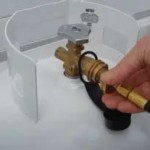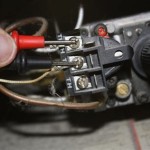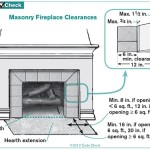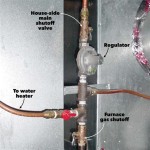Fireplace Insert Repair Parts: A Comprehensive Guide
Fireplace inserts offer an efficient and aesthetically pleasing way to heat a home. However, like all mechanical devices, they are subject to wear and tear, requiring periodic maintenance and repair. Identifying and sourcing the correct fireplace insert repair parts is crucial to restoring functionality and ensuring safe operation. This article provides a detailed overview of common fireplace insert components, potential issues, and how to locate the appropriate replacement parts.
Understanding Fireplace Insert Components
A fireplace insert is a self-contained heating unit designed to fit into an existing fireplace opening. These inserts are available in various fuel types, including wood, gas, and electricity, each with distinct components contributing to their operation. Understanding the function of each component is essential for accurate diagnosis and targeted repairs.
Combustion Chamber Components (Wood Inserts): Wood-burning inserts feature a combustion chamber where wood is burned. Key components within this chamber include firebricks, baffle boards, and grates. Firebricks are refractory materials lining the firebox, protecting the metal structure from extreme heat. Baffle boards, often made of ceramic or metal, control airflow and promote more complete combustion. Grates support the wood, allowing air to circulate underneath for efficient burning.
Gas Train Components (Gas Inserts): Gas inserts rely on a complex system of gas delivery and ignition. The gas train includes the gas valve, which controls the flow of gas to the burner assembly. The burner assembly disperses the gas for combustion. A pilot light or electronic igniter initiates the burning process. Thermocouples or thermopiles sense the presence of a flame and ensure the gas valve remains open for continued operation. Safety features such as pressure regulators and shut-off valves are also integrated into the gas train to prevent hazards.
Electrical Components (Electric Inserts): Electric fireplace inserts utilize electric heating elements to generate heat. These elements are typically resistive coils that heat up when electricity passes through them. A thermostat controls the temperature by regulating the flow of electricity to the heating elements. Other components include fans for circulating warm air, control panels for adjusting settings, and safety features such as overheat protection.
Common to All Inserts: Regardless of the fuel type, several components are common to many fireplace inserts. These include fans or blowers to circulate heat into the room, thermostats to regulate temperature, door assemblies to contain the fire and smoke, and venting systems to exhaust combustion byproducts. Gaskets and seals are also crucial for maintaining airtight connections and preventing leaks.
Identifying Common Fireplace Insert Problems
Diagnosing the source of a problem is the first step in a successful repair. The symptoms of a malfunctioning fireplace insert can vary depending on the fuel type and the specific component that is failing. A systematic approach to troubleshooting is recommended.
Wood Inserts: Common issues with wood inserts include cracked or broken firebricks, warped or damaged baffle boards, and worn-out grates. Inefficient burning can result from air leaks or improperly functioning air controls. Excessive smoke can indicate a blocked chimney or inadequate draft. Over time, gaskets around the door can deteriorate, leading to air leaks and reduced efficiency.
Gas Inserts: Gas inserts often experience problems related to the gas train, such as a malfunctioning gas valve, a clogged burner, or a faulty igniter. A pilot light that repeatedly goes out can indicate a dirty thermocouple or a weak pilot assembly. Unusual odors can signify a gas leak and require immediate attention. Sooting, the accumulation of black carbon deposits, can be caused by incomplete combustion due to improper gas pressure or insufficient airflow.
Electric Inserts: Electric inserts may experience issues with the heating elements, thermostat, or fan. A lack of heat output can indicate a burned-out heating element or a malfunctioning thermostat. A noisy fan can be caused by worn bearings or a build-up of dust and debris. Control panel malfunctions can be due to faulty wiring or a damaged circuit board. Overheating can trigger safety shut-off mechanisms, preventing the insert from operating.
General Issues: Common issues across all insert types include blower motor failure, thermostat malfunctions, and gasket deterioration. A dysfunctional blower motor reduces the insert's ability to circulate heat effectively. A faulty thermostat can cause temperature fluctuations or prevent the insert from turning on or off. Worn-out gaskets lead to air leaks, reducing efficiency and potentially creating a fire hazard.
Proper cleaning and maintenance can prevent many of these issues. Regular chimney cleaning is essential for wood and gas inserts to prevent blockages and ensure proper draft. Inspecting and cleaning the blower motor and burner assembly can improve performance and extend the lifespan of the insert. Periodically checking gaskets and seals and replacing them as needed is crucial for maintaining efficiency and safety.
Sourcing Fireplace Insert Repair Parts
Once the problem has been identified, the next step is to source the necessary repair parts. Several options are available, each with its own advantages and disadvantages. Careful consideration should be given to the type of part needed, the availability of the part, and the cost.
Original Equipment Manufacturer (OEM) Parts: OEM parts are manufactured by the same company that produced the original fireplace insert. These parts are designed to fit perfectly and function optimally. Sourcing OEM parts ensures compatibility and maintains the original performance characteristics of the insert. However, OEM parts are often more expensive and may be harder to find, especially for older models.
To locate OEM parts, consult the owner's manual for the fireplace insert. The manual typically lists the manufacturer's contact information and provides part numbers for common replacement parts. Check the manufacturer's website or contact their customer service department to inquire about parts availability. Authorized dealers and service centers are also good sources for OEM parts.
Aftermarket Parts: Aftermarket parts are produced by companies other than the original manufacturer. These parts are often less expensive than OEM parts and may be more readily available. However, the quality and fit of aftermarket parts can vary significantly. It is essential to choose reputable suppliers and carefully inspect the parts to ensure they meet the required specifications.
When selecting aftermarket parts, pay attention to the materials used, the dimensions of the part, and any relevant certifications or standards. Read reviews and compare prices from different suppliers to find the best value. Consider the warranty offered on the part, as this can provide some assurance of quality.
Local Fireplace Dealers and Service Centers: Local fireplace dealers and service centers are valuable resources for finding repair parts. They often stock common replacement parts and can order less common parts from their suppliers. These dealers have expertise in fireplace inserts and can provide advice on diagnosing problems and selecting the appropriate parts.
Visiting a local dealer allows for a hands-on inspection of the parts and the opportunity to ask questions. The dealer can also provide installation services if needed. Local dealers may charge a premium for their services, but the convenience and expertise they offer can be worth the extra cost.
Online Retailers: Online retailers offer a wide selection of fireplace insert repair parts at competitive prices. Websites such as Amazon, eBay, and specialized fireplace supply stores provide extensive catalogs and search tools. Online shopping allows for easy comparison of prices and features, and the convenience of having parts delivered directly to the home.
When shopping online, carefully review the product descriptions and images to ensure the part is compatible with the fireplace insert. Check the seller's ratings and reviews to assess their reliability. Pay attention to the shipping costs and return policies. Be aware of potential scams and only purchase from reputable websites.
Identifying the Correct Part: Regardless of the source, accurately identifying the correct part is crucial. Always refer to the fireplace insert's owner's manual for part numbers and specifications. If the owner's manual is not available, try to locate the model number of the insert. The model number is typically found on a label attached to the insert, often near the door or on the back. Use the model number to search online for parts diagrams and lists.
When ordering parts, provide as much information as possible to the supplier, including the model number, the part number, and a description of the part. If possible, take clear photographs of the damaged part and send them to the supplier. Double-check the part dimensions and specifications before placing the order. If unsure about the correct part, consult with a qualified technician or dealer.
Replacing fireplace insert components often requires specialized tools and knowledge. If unfamiliar with the repair process, it is recommended to seek professional assistance. Improper installation can lead to safety hazards or further damage to the insert.

A Plus Inc Superior B500 Replacement Parts Accessories

What Are Common Gas Fireplace Service Parts Fireplaces Direct Learning Center

Hd35 Napoleon Fireplace Repair Parts At Fireplaceparts Com

Does This Fireplace Inserts Need To Be Replaced Immediately Interior Inspections Internachi Forum

What Makes Up A Fireplace Chimney Dc Area Repair Service

Gas Fireplace Insert Cost Forbes Home

Heat Glo At Grand D Fireplace Gas Insert Parts Heatandgloparts Com

Gas Stoves Fireplaces Inserts Installations Columbia Md

Gas Fireplace Insert Service Safety Inspection

Napoleon Ascent Dx42 Direct Vent Gas Burning Fireplace








